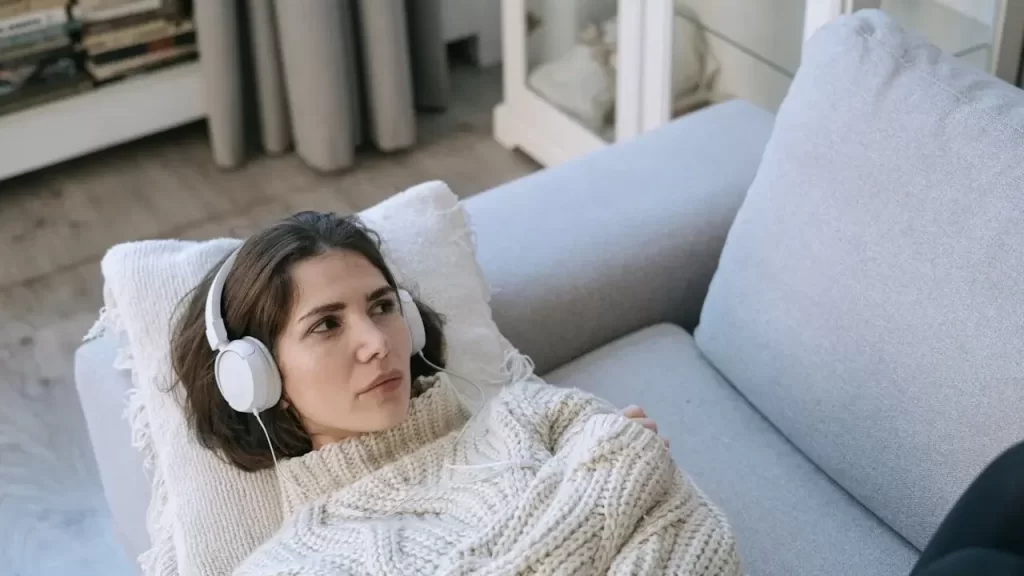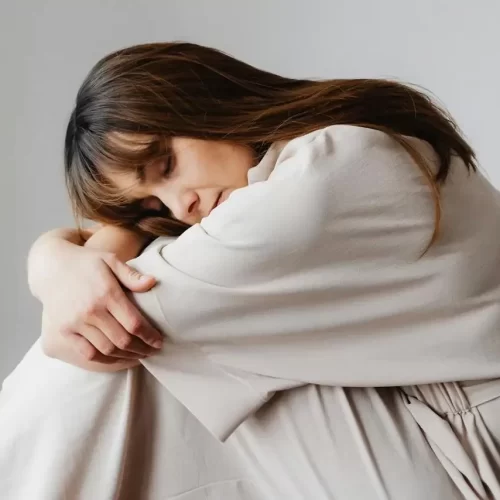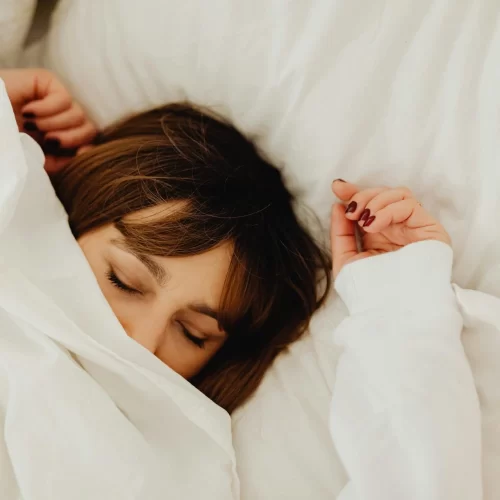
As October rolls in, many people find delight in the beauty of fall. The crisp leaves underfoot, cozy evenings and sunsets, apple-picking adventures, and of course, pumpkins everywhere. But for some, this season can bring an unexpected heaviness. Instead of feeling good, it can feel like a struggle to even get out of bed.
Well, there is a reason for all those lazy feelings and almost 5% of the US population suffers from such seasonal winter depression. But what is this condition exactly and why does it have such a strong effect on us?
Let’s begin by understanding what winter depression is.
What Is Winter Depression?
Winter depression, also known as Seasonal Affective Disorder (SAD), is a type of depression that occurs with the changing of seasons. While it can usually affect people at the beginning of any season, it typically begins in autumn, lasts into the winter months, and then improves in the spring.
Interestingly, women are four times more likely than men to experience this condition. Also, as winter depression is most common in the fall and winter, people who live in colder places are more likely to have it. For example, those who live in Florida might not be as likely to get SAD as people who live in Canada.
What Causes Winter Depression?
The exact reason why the body feels so depressed during the winter season isn’t fully understood yet. However, many scientists believe that it can be caused by days getting gradually shorter.
Fewer hours of light make the brain produce less serotonin, which is a hormone that plays an important role in managing mood. Also, disruption of the circadian rhythm and hormonal changes like melatonin have a way of contributing. Due to the absence of sunlight, they disrupt your biological clock, making it difficult for one to get a good rest at night and thus the feeling of sadness starts to creep in.
What Are the Symptoms of Winter Depression?
SAD is more than just winter blues or feeling depressed. Those experiencing it may find themselves feeling increasingly lethargic, withdrawn, and unable to enjoy activities they once loved, just like depression. However, there are many related symptoms that can be seen in a person who feels it.
- Feeling sad and lifeless most of the time and daily
- Social withdrawal, or more like a hibernation.
- Thoughts of hopelessness and despair
- Changes in the diet and increased cravings for carbs and sugar
- An excessive urge to sleep or no sleep at all
- Difficulty doing normal activities
- Having thoughts of self-harm or not wanting to be alive
These symptoms are different from major depression due to the typical onset of symptoms and their pattern. In order to be diagnosed with seasonal affective disorder, these symptoms must be present for at least two years in a row.
How to Get Out of Winter Depression?
Living with winter depression can be hard. But it doesn’t matter where you live or how dark and cold the winters are; it is totally treatable.
Let’s learn how to beat these winter blues.
1. Light It Up
Light therapy, also known as phototherapy, is considered the gold standard for winter depression treatment. It is a promising choice for many and most people see benefits within a week or two after starting therapy. This effective treatment mimics natural sunlight using specially designed artificial lamps with the best intensity of 10,000 lux.
The process of using light therapy treatment involves sitting in front of the lamp for almost 20–30 minutes daily. It is best to start your day with this routine. If you want to get the most out of light therapy, it’s recommended to begin in the fall and keep going all winter long, even if the days are shorter.
2. Soak Up the Sun
Another best method to deal with SAD is spending time in natural light, such as outdoors, in parks or gardens. Sunlight, even in small doses or on cloudy days in the winter, will help increase serotonin levels and boost your mood.
So whenever possible, find ways to spend some time outside by going out for a walk. If that is not possible, try just sitting next to a window. Try exposing yourself to the sun without wearing sunglasses. Another thing that helps is to let as much sunlight into your room or workplace by opening blinds and letting the sunlight in.
3. Change the Mindset
We know that these winter blues aren’t your own choice. So why not shift your mindset and embrace it instead of resisting it?
For example, in Northern Norway, winter is seen as a time to enjoy and not just tolerate. In fact, it was even proven in the study that people there are actually less likely to be depressed because they have a positive winter attitude.
So, what you can do is consciously try to change your mindset. Try thinking of cozy hot chocolates, skating or skiing, winter puzzles, building a snowman, and finally, wearing all those winter clothes tucked away in a closet.
Winter can be a season of warmth and delight if you let it!
4. Turn the Tunes On for Winter Blues
When the sunlight is dim outside, you can also use music as a tool to reduce winter mood swings. Research shows that music therapy offers real psychological benefits for those battling seasonal affective disorder. It triggers the brain to produce prolactin and is clinically proven to reduce stress and anxiety. A 2014 study even found that music therapy significantly alleviated symptoms of SAD in patients.
Also, it is better to listen to music mindfully rather than passively. Research indicates that simply listening passively to music typically doesn’t enhance or change your mood as significantly. But music is much more likely to make you feel better when you connect with it on a deeper level—with the music, rhythm, and lyrics.
So try this hack by listening to your favorite tunes maybe sing along and see the difference yourself!
5. Don’t Ditch Exercise
Like all the other benefits we get from moving your body, doing some physical activity can work as an antidepressant charm too.
In fact, exercising for 30 to 60 minutes every day has been found to help you reduce your depression risk by 26%. So, make physical exercise a must during the winter, like a good strength training regimen or aerobics.
If you feel sluggish or don’t know where to start, you can get help from a trainer or take classes online to learn at home aerobics. If not, then there are great workout videos on YouTube that you can do without any equipment and in as little as 15 minutes.
6. Laugh More
There is nothing wrong with admitting that laughter is the best medicine, even for treating seasonal disorder (SAD). It is because, when you laugh, stress hormones such as cortisol drop, and your endorphins get a boost. Research backs up that laughing has several health benefits, including elevating mood, boosting immunity, and improving general well-being.
So, to brighten up your SAD days, try watching a funny movie or a comedy show, play games with friends, or even try yoga therapy. All of these activities can surely lift your mood.
7. Get Social to Beat Winter Depression
You might be thinking that hibernating like a bear in winter will be best for you in winter. But do you know that keeping yourself isolated can be as bad for your health as smoking 15 cigarettes a day?
Getting more social and meeting people is actually great for beating the winter blues. According to a study, being among loved ones makes you feel more at home, which boosts satisfaction and pleasure and reduces depressive symptoms.
So, try talking to your loved ones on a phone call and let them know your feelings. They might become the best source of help. You can also try calling at least one trusted person daily.
Or try taking someone along with you for a walk or for a coffee, even if you don’t feel like it. A little company doesn’t harm anyway, right?
8. Be watchful of What You Eat
Good food can lift your mood in seconds. So try to add some nutritious options to your diet to treat winter depression.
While winter depression may make you binge eat carbs or junk food, try to eat more protein and fresh produce to stave off sugar crashes.
Some other options to add to your winter regime are foods loaded with vitamin D and omega-3 fatty acids. These two nutrients are crucial for brain and heart health, but people with winter depression or SAD tend to eat less of them. So incorporate these nutrients by adding foods like fatty fish, fortified cereals, milk, and orange juice to your diet.
If you struggle to get enough vitamin D through your diet, you can also consider taking supplements during the winter months. To get a more detailed and in-depth plan, a nutritionist or doctor can help you figure out what foods you should cut out or add more to your diet.
9. Plan a Staycation!
Another very helpful yet less discussed thing to treat winter depression is to plan a vacation to places that are warmer or offer more sunshine. It can help you escape cold, overcast skies for a while. Not only this, planning your trip can make you feel good even before you leave, and a good mood can last for a long time after you get back.
If that is not the option, then try exploring the neighborhood, spending some time out, and finding ways to do fun holiday activities at home.
10. Seek Professional Help
If these methods do not help you, it is time to seek help from professionals. There are services and treatments they offer that can give you a helping hand. These include cognitive behavioral therapy or certain medications.
Wrapping Up
Do not let the winter depression overcome the joys of life. As the colder months approach, it is the perfect time to take action. We have shared numerous ways to prepare for the winter depression and how to deal with it. Why not try adding them to your routine before the winter season begins? Test them out and see how they work their magic.
While using these strategies to fight winter depression, how about reading our article on Mindful Christmas Coloring? It is a fun way to unwind and even find happiness in the season while also bringing some color to the cold winter days!
References
- Melrose, Sherri. “Seasonal Affective Disorder: An Overview of Assessment and Treatment Approaches.” Depression Research and Treatment, vol. 2015, Jan. 2015, pp. 1–6. https://doi.org/10.1155/2015/178564.
- “As winter approaches, seasonal depression may set in for millions.” https://www.heart.org/, 30 Nov. 2022, www.heart.org/en/news/2022/11/30/as-winter-approaches-seasonal-depression-may-set-in-for-millions.
- Kuehner, Christine. “Why is depression more common among women than among men?” The Lancet Psychiatry, vol. 4, no. 2, Feb. 2017, pp. 146–58. https://doi.org/10.1016/s2215-0366(16)30263-2..
- “Seasonal Affective Disorder.” National Institute of Mental Health (NIMH), www.nimh.nih.gov/health/publications/seasonal-affective-disorder.
- Young, Michael A., et al. “The temporal onset of individual symptoms in winter depression: differentiating underlying mechanisms.” Journal of Affective Disorders, vol. 22, no. 4, Aug. 1991, pp. 191–97. https://doi.org/10.1016/0165-0327(91)90065-z.
- Europe PMC. Europe PMC. europepmc.org/abstract/pmc/pmc6746555..
- Liu, Xifang, et al. “Effects of five-element music therapy on elderly people with seasonal affective disorder in a Chinese nursing home.” Deleted Journal, vol. 34, no. 2, Apr. 2014, pp. 159–61. https://doi.org/10.1016/s0254-6272(14)60071-6.
- Thoma, Myriam V., et al. “The Effect of Music on the Human Stress Response.” PLoS ONE, vol. 8, no. 8, Aug. 2013, p. e70156. https://doi.org/10.1371/journal.pone.0070156.
- Craft, Lynette L., and Frank M. Perna. “The Benefits of Exercise for the Clinically Depressed.” The Primary Care Companion for CNS Disorders, vol. 6, no. 3, June 2004, https://doi.org/10.4088/pcc.v06n0301.
- Bennett, Mary Payne, and Cecile Lengacher. “Humor and Laughter May Influence Health IV. Humor and Immune Function.” Evidence-based Complementary and Alternative Medicine, vol. 6, no. 2, Jan. 2009, pp. 159–64. https://doi.org/10.1093/ecam/nem149.
- Ekong, Moses B., and Clementina F. Iniodu. “Nutritional therapy can reduce the burden of depression management in low income countries: A review.” IBRO Neuroscience Reports, vol. 11, Dec. 2021, pp. 15–28. https://doi.org/10.1016/j.ibneur.2021.06.002.
- “Seasonal Affective Disorder and Complementary Health Approaches : What the Science Says.” NCCIH, www.nccih.nih.gov/health/providers/digest/seasonal-affective-disorder-and-complementary-health-approaches-science#:~:text=Cognitive%20Behavioral%20Therapy%20(CBT%2DSAD)&text=Traditional%20cognitive%20behavioral%20therapy%20has,a%20technique%20called%20behavioral%20activation.
- —. “Music in Mood Regulation and Coping Orientations in Response to COVID-19 Lockdown Measures Within the United Kingdom.” Frontiers in Psychology, vol. 12, May 2021, https://doi.org/10.3389/fpsyg.2021.647879.



Leave a Reply